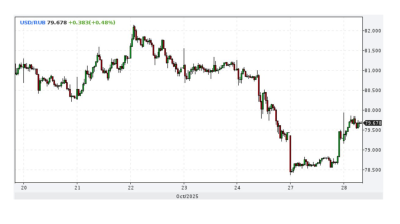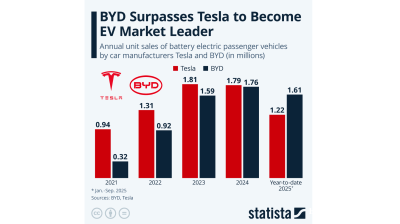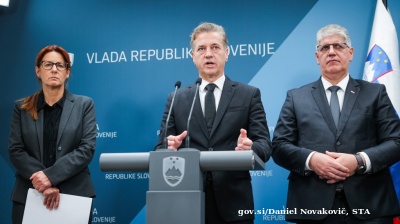Kremlin spokesman Dmitry Peskov described Russia's fertility rate as "catastrophically low," warning on July 26 that it poses a serious threat to the country's future, but the rate is still not as bad as the worst rates in Europe.
As reported by bne IntelliNews in the Putin’s babies feature, President Vladimir Putin has focused on improving Russia’s demographics since his first day in office. Russia suffered from a demographic collapse during the chaos of the 1990s and, despite a brief recovery in the boom years of the noughties, the population is still in decline.
Putin has made improving demographics as one of the key goals of his National Projects 2.1 programme, also known as the May decree. He recently addressed this demographic issue in a decree focused on national development goals.
The current total fertility rate in Russia stands at approximately 1.4, which Peskov noted is comparable to low levels seen in Europe and Japan. Spain, Italy and Poland have some of the worst fertility rates in Europe, at 1.16, 1.24 and 1.29 respectively. France, Romania and Turkey have some of the best rates in Europe at 1.79, 1.71 and 1.63 respectively. Germany is in the middle and on a par with Russia at 1.46 and Japanese fertility was 1.30 live births per woman in 2021. There is no country in the EU that has a fertility rate that is above the 2.1 replacement rate needed to keep the size of the population stable.
Ukraine has a catastrophically low 1.1 fertility rate, when it was last recorded by Eurostat in 2019. Ukraine's population collapsed to 29mn souls last year, after the birth rate fell to a 300-year low. The UN recently predicted that Ukraine’s population will crash to a mere 15mn people by 2050 from the 45mn pre-war peak.
The picture in Russia becomes more complicated when you drill into the regional distribution of Russia’s fertility rates, as some regions have much higher replacement rates. For example, Chechnya (2.74) and Altai (2.07) both have rates over two, but these are more than offset by regions like Leningrad that surrounds St Petersburg with a replacement rate of only 0.84 – the lowest in the country. All the other regions are under two.
Speaking at a media forum near Moscow, Peskov highlighted the urgency of reversing this trend, stressing that Russia, the world's largest country by land area, is experiencing a population decline.
"This trend can only be reversed by raising the fertility rate," Peskov stated, adding that women who have three or more children should be regarded as "heroes," likening them to military veterans or scientists who discover cures for deadly diseases.
In response to this demographic challenge, Putin's May decree outlines goals to raise the fertility rate to 1.6 by 2030 and further to 1.8 by 2036. The decree aims to "ensure sustainable economic and social development" in Russia, with a focus on population growth and improving living standards.
Official statistics reveal that Russia's fertility rate was 1.41 in 2023, the lowest in 17 years, and a significant drop from the peak rate of 1.78 recorded in 2015. The number of births in 2022 was just over 1.2mn, the lowest since 1999.
The declining population has led to concerns about a potential labour shortage, with Deputy Prime Minister Dmitry Chernyshenko warning in June that Russia could face a shortage of up to 2.4mn workers by 2030. This demographic crisis poses significant challenges for the country's future economic stability and growth.
The number of children born in the EU has been declining since 2008, when 4.68mn children were born. The total European fertility rate in 2022 was 1.46 live births per woman in the EU, which is another decline, after the small increase recorded in 2021 (the total fertility rate was 1.53 in 2021 and 1.51 in 2020).
Data

Ruble strengthens as sanctioned oil companies repatriate cash
The Russian ruble strengthened after the Trump administration imposed oil sanctions on Russia’s leading oil companies, extending a rally that began after the Biden administration imposed oil sanctions on Russia in January.

Russia's central bank cuts rates by 50bp to 16.5%
The Central Bank of Russia (CBR) cut rates by 50bp on October 24 to 16.5% in an effort to boost flagging growth despite fears of a revival of inflationary pressure due to an upcoming two percentage point hike in the planned VAT rates.

Ukraine's trade deficit doubles to $42bn putting new pressure on an already strained economy
Ukraine’s trade deficit has doubled to $42bn as exports fall and imports balloon. The balance of payments deficit is starting to turn into a serious problem that could undermine the country’s macroeconomic stability.

BYD surpasses Tesla to become EV market leader – Statista
While Chinese manufacturer BYD already pulled ahead of Tesla in production volume last year, with 1,777,965 battery electric vehicles (BEV) produced in 2024 (4,500 more than Tesla), the American manufacturer remained ahead in sales.




